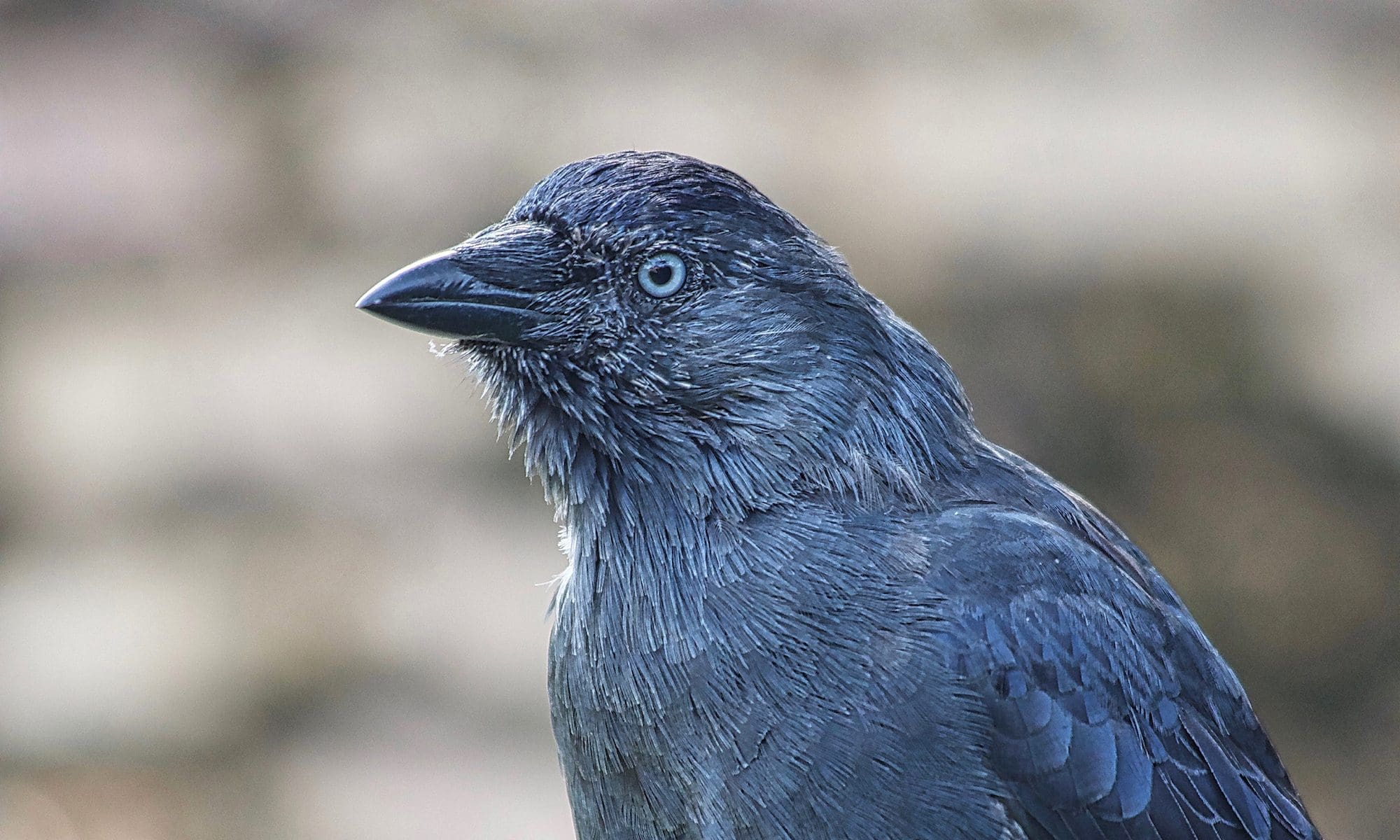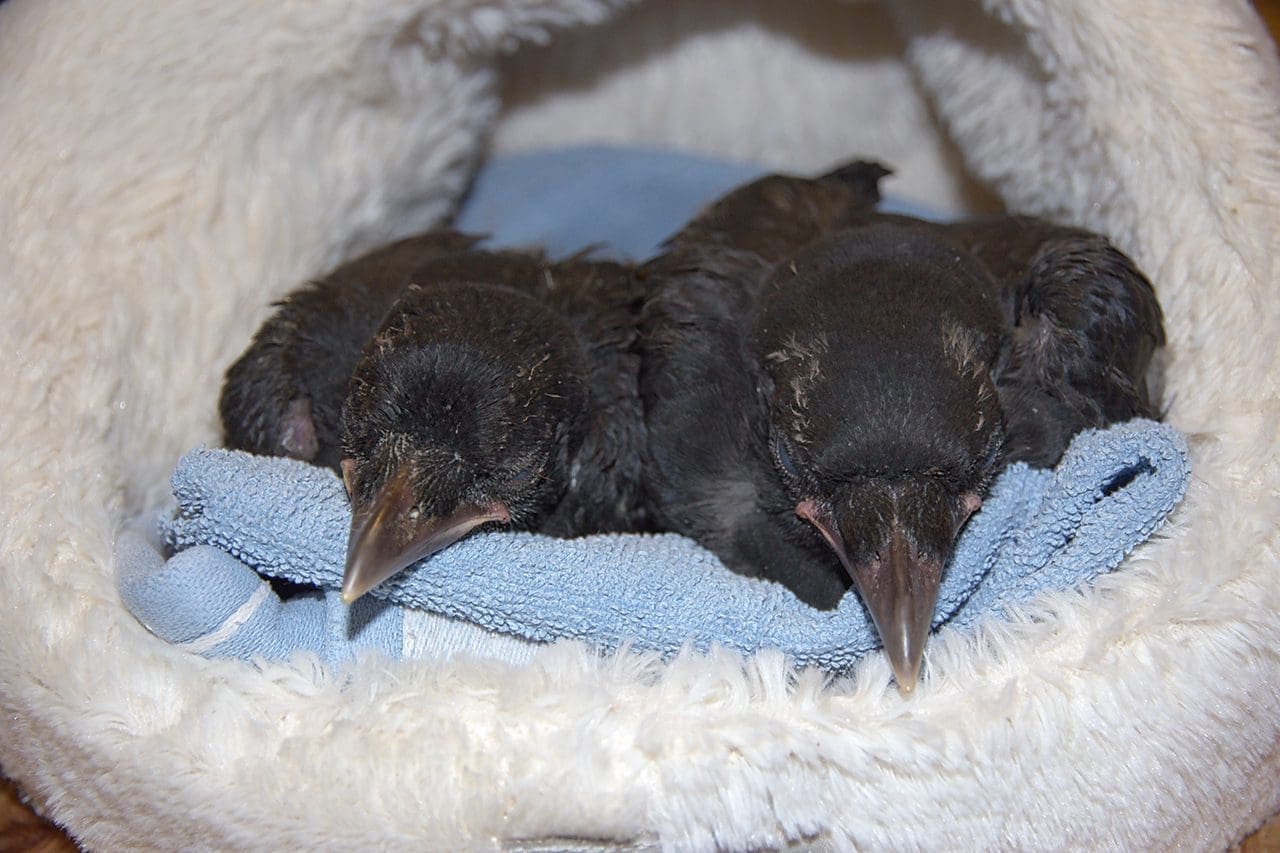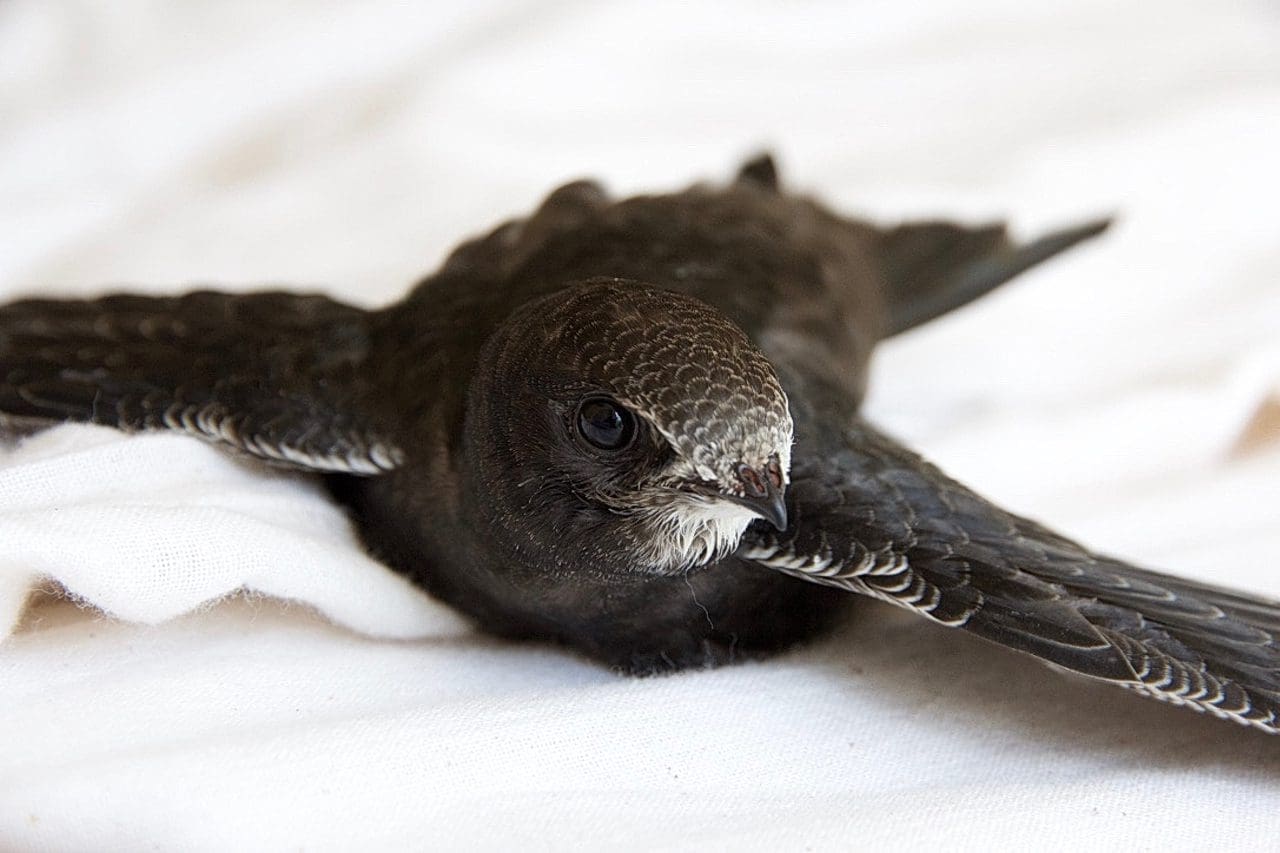Laniakea came to us as an adult rook in Spring 2017. We did not know for sure how old she was when she arrived. However, it was very obvious to us that Laniakea was already an experienced and mature rook. When we rescued her, it became immediatly apparent that she would never be releasable. This thought was deeply troubling, in particular as it was very likely that Laniakea had a partner, who was waiting for her. Her arrival came with a big shock too, as she had suffered horrendous injuries to her leg, most likely caused by a spring trap. Laniakea had to undergo surgery, but recovered very well from her leg amputation.
First Aid For Birds – How To Help A Grounded Corvid Fledgling
Introduction
It is nesting season and corvid fledglings are about to leave their nests to start the big adventure of life. Corvid fledglings are fully feathered and healthy looking birds, who can perch, stand and hop by themselves. They are already able to fly short distances. Fledglings of many bird species leave the nest at this stage, and for good reasons. If they would remain in the nest, predators could have an easy meal, killing the whole brood at once. Leaving the nest and hiding scattered in trees, in the undergrowth or in bushes, even when not fully developed and not being able to fly properly, is the best way to increase survival chances. It gives fledglings the time and required exercise to improve their flying skills, which often takes less than a week of daily practice, after they have left the nest.
Continue reading “First Aid For Birds – How To Help A Grounded Corvid Fledgling”
First Aid For Birds – How To Help Your Local Wildlife Rescue
Introduction
Rescuing, rehabilitating and subsequently releasing wild animals is thought to be very much rewarding. And the truth is that it is. But as always, there are two sides to every story. Helping animals in distress does also mean to care for terminal ill animals, to make tough decisions in the interest of the animal concerned, to take responsibility and to constantly review and adapt working practice. However, being involved in wildlife rescue and rehabilitation also means, amongst other things, to interact with people who have found animals in need of help, to collaborate with volunteers or to liaise with members of the public during fundraising and educational events. Interestingly, in the view of many rehabbers, these interpersonal interactions are often regarded as the most difficult part of wildlife rescue and rehabilitation.
Continue reading “First Aid For Birds – How To Help Your Local Wildlife Rescue”
Racing Pigeon Biscay
This story occurred a couple of years ago, but the described scenario and underlying problem is as timeless as ever. During my evening shift as marine mammal surveyor on board of a ferry on route to Santander in Spain, I was forced to witness a small group of lost racing pigeons loosing their fight against the strong winds of the Bay of Biscay. I had to watch the drama unfolding, and there was nothing I could do to help. In this respect, spring and autumn surveys are known to be particularly emotionally demanding, as surveyors are regularly forced to helplessly watch the struggle of travelling and migrating birds. This situation is neither unexpected nor unique, but can be emotionally draining. At the very least, it feels very surreal when witnessing tragedies like this one on board of a luxurious ferry, where most people are busy enjoying their lives and holidays. Most of these tragic encounters go unnoticed and are missed even by keen birders and whale and dolphin enthusiasts armed with expensive gear.
First Aid For Birds – How to Know If A Bird Is Sick
Wild animals, and in particular birds, will try very hard not to show any signs of disease or of being unwell. This survival strategy makes it often difficult to actually notice that a bird is ill or injured. This common problem can lead to a delay in treatment, which sadly often means that with progressing time it becomes more difficult or even impossible to save the animal. To establish whether a bird is diseased or not, it is necessary to closely observe the animal in question, sometimes for a longer period of time. In any case, if the bird is not in immediate danger, then observing the bird from a safe distance is usually very informative. Whilst observing the bird, it might also be a good idea and the right time to get in touch with a local rehabber or wildlife rescue to obtain expert advice or assistance.
Continue reading “First Aid For Birds – How to Know If A Bird Is Sick”






